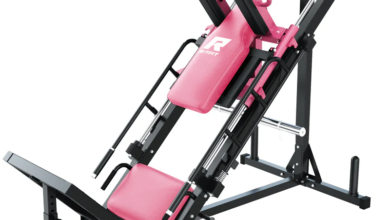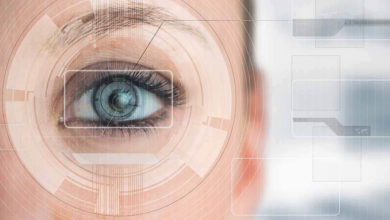We’re surrounded by health and wellness trends, and it can take time to sift through them and find what works for you. This can be an even more tender topic when you’re looking for support with your reproductive health.
Reproductive health issues can range from disorders like endometriosis and PCOS. It may also mean you’re seeking extra help navigating painful periods, fertility, or menopause. Point is, reproductive health can be complicated, which is why you want tools that work.
One new tool that’s gaining popularity is red light therapy. You might have heard of using red light therapy as a skincare treatment, but it has a lot of other applications – including supporting reproductive health.
What is Red Light Therapy?
Red light therapy is a technology that was initially developed by NASA as a potential way to help astronauts’ wounds. This means it’s not just another trend, it’s a valid medical tool created by some of the most brilliant scientists on the planet.
But how does it work?
The cells in your body are made up of many different parts, or organelles. One organelle, the mitochondria, helps to create ATP, which is the primary energy source for most of the body’s physiological processes like movement and homeostasis.
Red light therapy helps to stimulate mitochondria, increasing ATP formation. More ATP means more energy, which allows cells to work more efficiently, and helps to heal parts of the body. This technology may help reduce inflammation in cells and increase blood circulation to tissues, along with other benefits.
Different forms of red light therapy are used to help treat:
Red light therapy can be a great option for treating a wide range of health issues especially since it is minimally invasive, can be performed as an outpatient treatment, and currently has no known long-term side effects when done correctly. Can it also be used to help with reproductive health issues?
Can Red Light Therapy Help Reproductive Health?
If NASA trusts it, there must be something to this technology. The short answer is yes, red light therapy can help with a wide range of reproductive health issues.
Painful periods
Period pain is not necessarily normal, but unfortunately, it is common. If you deal with painful periods regularly or occasionally, we feel you. This is one area of reproductive health that red light therapy may help support.
A Korean study on women who experience period pain, dysmenorrhea, examined the use of red light therapy through the use of an LED belt. They found that using near-infrared rays helped to relieve period pain and improve their quality of life.
While studies are limited, red light therapy is relatively low risk, and supposedly helps to relieve period pain by reducing inflammation and promoting relaxation and blood circulation.
Endometriosis
One potential cause of painful periods is endometriosis. The lining of the uterus is called the endometrium. In endometriosis, cells similar to this lining grow in places outside of the uterus like the fallopian tubes and ovaries.
Endometriosis can cause life-altering symptoms like extreme period pain, pain during penetrative sex, and heavy periods. While there is no known treatment for endometriosis, there are some tools that can help minimize symptoms.
One study observed 40 women with endometriosis ages 24-32 years. Researchers found that the group who received high-intensity laser therapy had reduced endometrial adhesions and significant improvement in period pain.
Thyroid disorders
We typically think of reproductive health disorders directly affecting the reproductive organs. However many reproductive disorders are endocrinological, meaning they have to do with the hormonal system.
This is true in the case of thyroid disorders. This tiny little gland in your neck secretes hormones and helps to regulate metabolism, heart rate, energy levels, and a lot more. When the thyroid is out of balance, it can wreak havoc in the body.
One of the most common thyroid disorders amongst females is Hashimoto’s thyroiditis, a form of chronic autoimmune thyroiditis, which typically requires medication. Researchers found that patients who received low-level laser therapy required lower doses of their thyroid medication post-treatment. This suggests that red light therapy can help to improve thyroid function and work in tandem with other treatments for autoimmune thyroid conditions.
Infertility
One of the most difficult reproductive health issues is infertility. If you are going through this, our hearts are with you. We understand how difficult it can be to feel like nothing is working, that you’re not getting answers, or to experience pregnancy loss.
While we want to be tender with this subject and don’t want to give anyone false hope, research on red light therapy has shown it may be beneficial for infertility. A Japanese study on females deemed “severely infertile”, found that 21.74% of those who received red light therapy were able to become pregnant, of that group, 68% had a successful live delivery.
Another study focused on patients undergoing IVF who had experienced recurrent implantation failure (RIF). Patients who received laser-treatment prior to embryo transfer had higher rates of clinical pregnancy, implantation, and a lower risk of miscarriage – 18.2% compared to 27.3% in the control group.
Red Light Therapy Side Effects
Not only are there different kinds of red light therapy and lasers available, this technology has a wide range of applications, especially when it comes to reproductive health. Are there any potential side effects?
A huge benefit of red light therapy is that it is extremely low risk, requires little downtime, is minimally invasive, and has no known long term side effects. That being said, certain people should avoid it like those with a photosensitizing medical condition like lupus. Most providers believe it is safe to use on a regular basis.
Wondering if red light therapy might be able to help you? That’s a conversation you should have with your healthcare provider. They can help you decide if red light therapy is right for you, as well as the best treatment or at-home device for your specific needs. If you’re dealing with reproductive health issues, our hearts go out to you, hopefully this helped shed some *light* on one tool that may be able to help.










